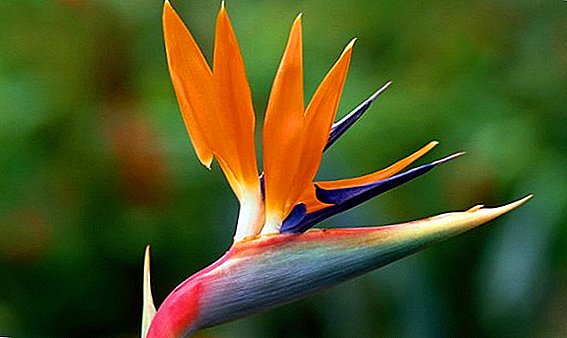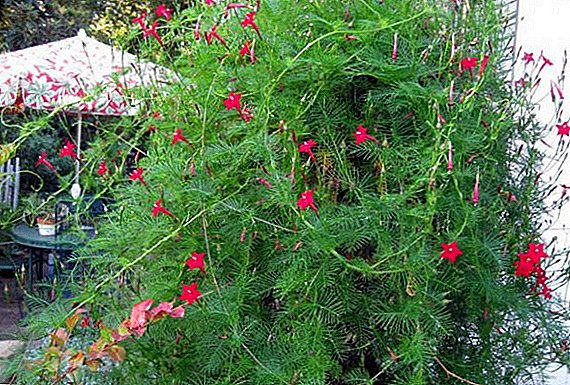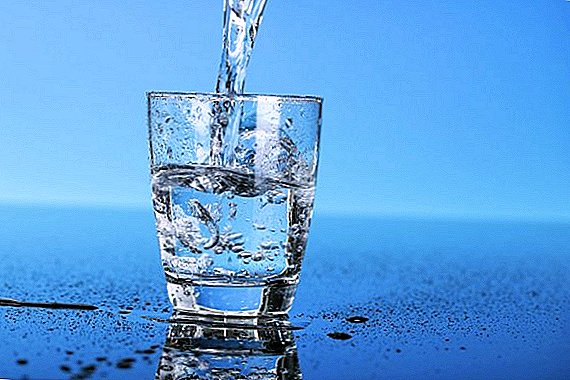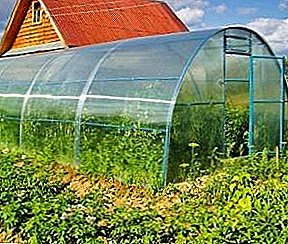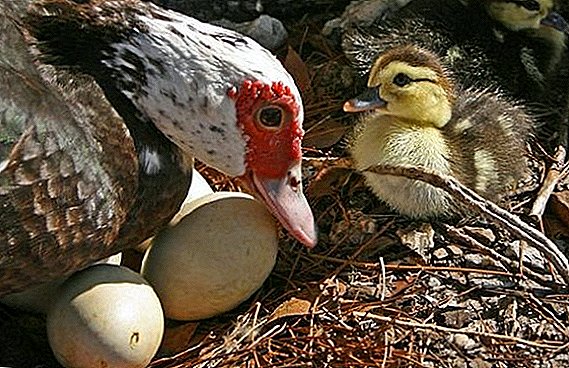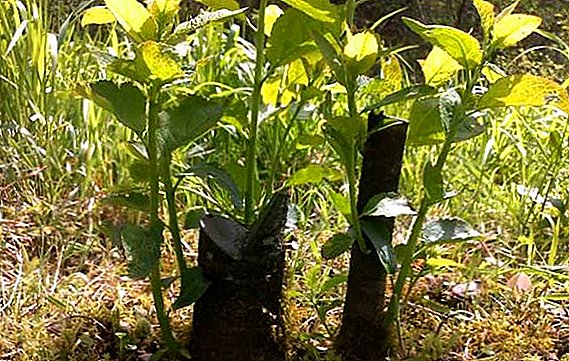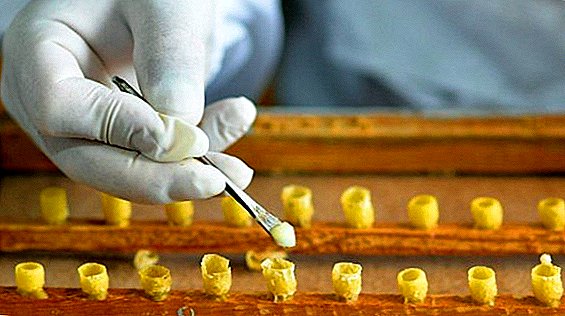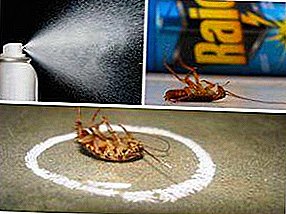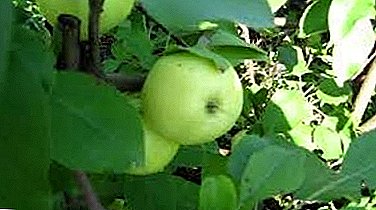
Growing an apple orchard in Siberia used to be considered incredible. Due to the long and painstaking work of breeders a variety of varieties have appeared that are adapted to the harsh climatic conditions.
One of the favorite varieties of Siberian gardeners is considered a variety of apple trees "Pavlusha".
What kind is it?
Apple trees of this species, depending on the region of cultivation, can belong to both mid-summer and late-summer varieties. Fruiting annual and abundant. It has above-average frost resistance, frost penetration is possible in severe cold, but after the season the trees are fully restored. The variety is skoroplodny, the first harvest is obtained in the third, fourth year. Resistant to scab disease.
The fruits have a pleasant taste and aroma. Storage time is short: from two to three months.
For high-quality and longer preservation of apples, it is recommended to observe some rules:
- ensuring a temperature regime of no higher than plus one degree Celsius;
- sorting fruits by quality and size;
- stacking on shelves or in boxes in one, maximum two, three layers;
- use of paper or sawdust of fruit trees, excluding the contact of fruits.
Flowering apple varieties "Pavlusha" need cross-pollination. To this end, it is possible to make a choice of one or several saplings of different varieties that mutually poll each other.
The selection of the best pollinators, for example, Antonovka, Papirovka, contributes to the formation of a larger number of the ovary. The main thing is that these should be valuable specimens with annual fruiting and simultaneous flowering. If there is not enough space in the garden to plant several varieties, pollination of one apple tree will occur from the neighboring trees of the surrounding gardens.
Description varieties Pavlusha

A tree with a pyramidal crown of average thickness reaches a height of 3 meters and a diameter of 2.5 meters.
Straight, rarely located branches are pulled up. Fruit formations in the form of simple and complex annuli with short and long slightly pubescent brown shoots.
The leaves are dark green, large oval-shaped with a pointed end, bumpy, the edges are curved down. At the base of the stem is a large crescent stipule.
The fruits are broad, rounded, slightly flattened, arranged on a curved short stalk. Apples are yellow-green with a slight pink blush, small dots are noticeable under the skin. Weight ranges from 40 to 110 grams, depending on the favorable location of the tree on the site and the conditions of care.
Pulp with medium density, granular, juicy, cream color. The fruit is sweet and sour. Differ high percentage of biologically active substances, like all varieties of apple trees bred for Siberia.
Breeding history
The apple variety "Pavlusha" was bred by the breeders of the Research Institute of Horticulture of Siberia named after M. Liesavenko in 1961 by free pollination of the variety "Borovinka" already bred with winter-hardy varieties, one of which is "Autumn Joy of Altai".
Natural growth region
The inhabitant of the gardens of the Altai Territory, moved from the Urals to the Far East.
New seedlings were accepted for testing by experimental farms in Barnaul, Omsk, Krasnoyarsk, Irkutsk, Novosibirsk.
Despite the high winter hardiness of the apple tree “Pavlusha”, a slight freezing of wood in the frost over 42 ° C was noted. Growing this variety on the skeletons of the Siberian berry apple gave excellent results: the freezing of the trunk was practically absent.
Yield
Fruit ripening occurs gradually: it begins in early August and lasts for a month. Fruiting annual, moderate. Yield increase is possible to achieve competent application of agrotechnical measures. On average, 12-15 kg of apples are removed from one tree, the maximum result reached the 41st kilogram.
Planting and care

Siberian saplings are well planted in the spring, when the soil warms up and melts completely.
Autumn trees that are not taken root are threatened with freezing.
Apple trees grow on fertile loamy soil.
The method of planting in cold climates differs from the standard one in that the roots of the seedlings are not deepened, but spread out over the previously prepared mound, falling asleep from above with a fertile layer. In the soil must be drainage. Having chosen a suitable place on the plot, dig a hole 60 cm deep and 1 m wide. Fill it with healthy wood waste, cover some of the remaining soil, and some 30 cm with a layer of prepared soil and fertilizer.
The clay soil needs to be dug up well with the addition of river sand and the necessary fertilizers. Enough to make 2 buckets of humus and 60 g of superphosphate and potassium sulfate. Acidic soils not suitable for apple trees are quenched with nitrate.
Before planting the stalk, a wooden stake about 1 m high is hammered in the center. Orient the seedling should be grafted with a sprig to the south, otherwise the period of fruiting will be delayed for a couple of years.
It is important not to fall asleep root neck throughout the life of the tree, it gradually leads to his death.
Around the planted tree to make an earthen roller for water retention and pour abundantly. To grind the soil in order to avoid the formation of a crust, which prevents the access of oxygen to the roots.
Pruning
The best time of this procedure is spring.
At a young age, pruning is done to stimulate the growth of the tree and increase the size of the fruit. For an apple of this variety with a sparse crown, pruning is the most minimal; you can remove shoots that compete with the main branches and crown growing inside.
The main thing is not to leave hemp in place of distant shoots.
At the first pruning of a young tree up to 3 years, the largest branches are shortened by 40 cm, in the future - by 15-20 cm. It is necessary to cover the places of cuts with garden pitch, but it is better to use grafting wax or Dolmatov's mastic, which heal wounds and do not crack. Spring trees regularly do sanitary pruning of dry branches to adult trees.
Watering and feeding
Close groundwater nourishes the plant with moisture for the whole summer; under dry weather conditions, it takes up to forty liters of water to irrigate one apple tree.
A feature of irrigation of the Siberian varieties is the method of crown irrigation from above like rain.
When top dressing is introduced with irrigation, around the trunk at a distance of 1 meter they make a depression and pour water without affecting the tree itself.
As an addition to bad weather conditions, fertilizers are regularly added to the soil: peat, superphosphate, humus. For good growth of young stock requires nitrogen.
Winter care
In autumn, when the tree goes into winter, the ground around it must be dug up and gradually covered with humus, peat layer up to 20 cm in order to avoid freezing of the trunk.
Diseases and pests
 Regardless of the actions of gardeners to grow and care for their garden, trees are periodically exposed to diseases and pest invasion. therefore Be sure to treat the stands with special solutions. for the prevention of diseases, preventing the occurrence of harmful insects and combating them.
Regardless of the actions of gardeners to grow and care for their garden, trees are periodically exposed to diseases and pest invasion. therefore Be sure to treat the stands with special solutions. for the prevention of diseases, preventing the occurrence of harmful insects and combating them.
The calendar of spraying the apple tree will help you navigate the timing of upcoming events.
Spring:
| Before the buds swell Spray at temperatures above + 5 ° C | Prevention of fungal diseases, destruction of insects that survived wintering | Copper sulfate, DNOC or nitrafen |
| Flowering period | Integrated pest management and disease prevention | Bordeaux mixture, solutions of copper or iron vitriol, chlorophos (against weevils and caterpillars) suspension of colloidal sulfur (when infected with ticks) |
| Destruction of Leaf Screws and Coppers | Chlorophos solution | |
| Extermination of caterpillars, fruit beetroot, sucker, aphids, ticks | Urea (karbofos) | |
| Extermination of caterpillars eating leaves | Ectobacterin suspension | |
| After flowering | Spray against scab and pests (mites, sawflies, larvae and caterpillars of butterflies and moths) | Bordeaux mixture, urea, copper cupro, iron sulphate |
| 15-20 days after flowering | Spray the combined compositions against apple moth, gnawing and sucking insects, scab | 1. Chlorophos + karbofos. 2. Suspension of powder DDT + urea |
Summer
| If necessary | Pest Control | Karbofos, Intavir and others. Insecticides |
| Fight against fungal diseases | Copper-containing preparations with the addition of soap |
Autumn
| After collecting the fruit and until the foliage | prevention of diseases and the destruction of wintering pests | Carbofos solution |
The goal of any gardener is to create a beautiful garden that will produce a good harvest.
By planting and growing an apple tree of the Pavlusha variety, you can provide your family with tasty and healthy fruits that are suitable for fresh use, in juicing and in cooking.


